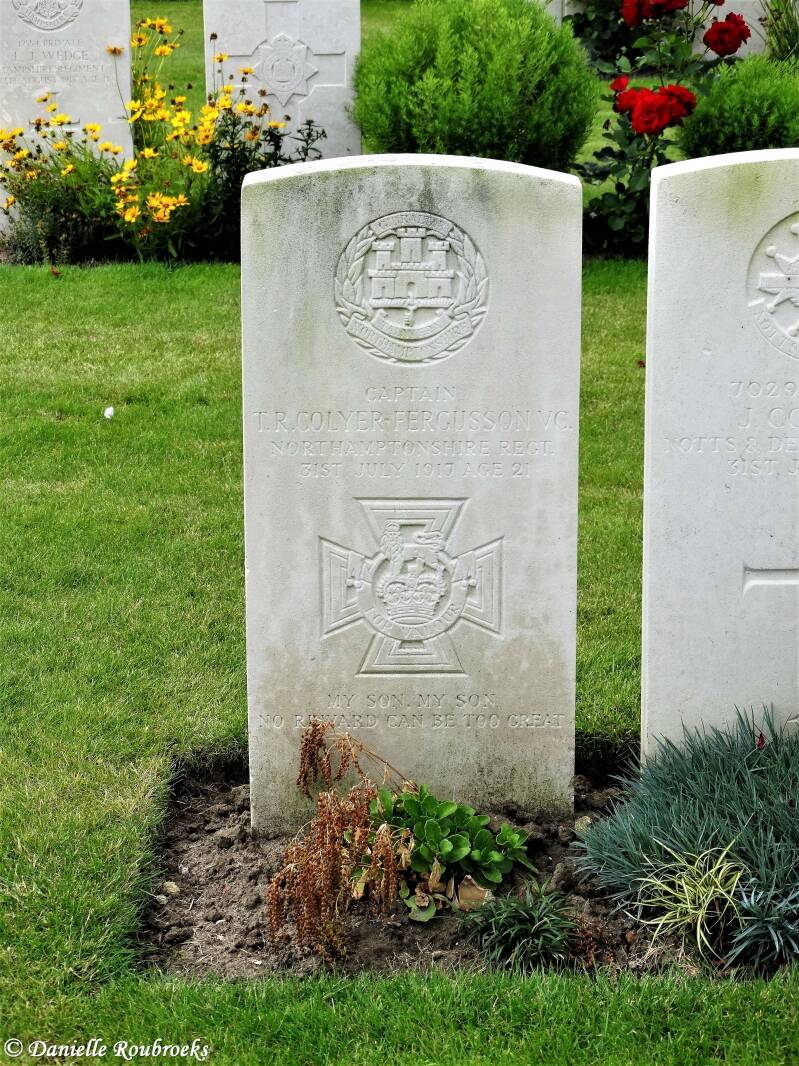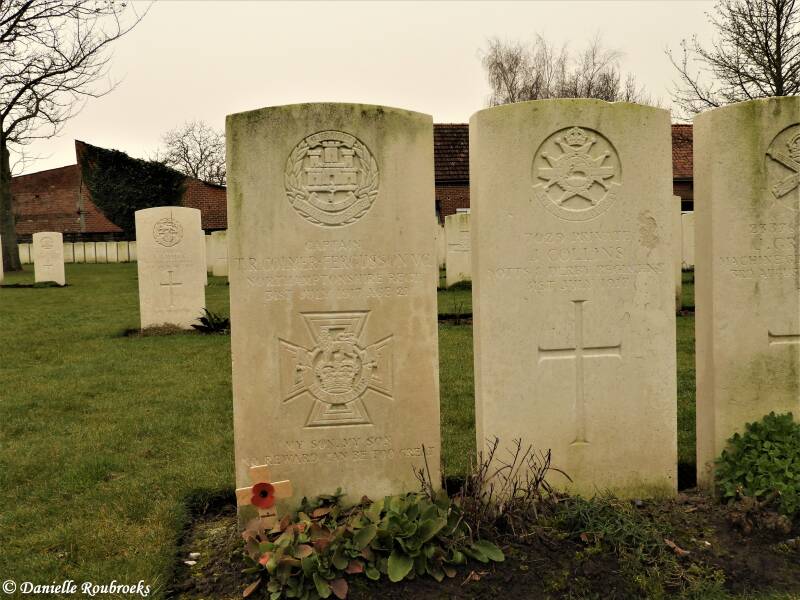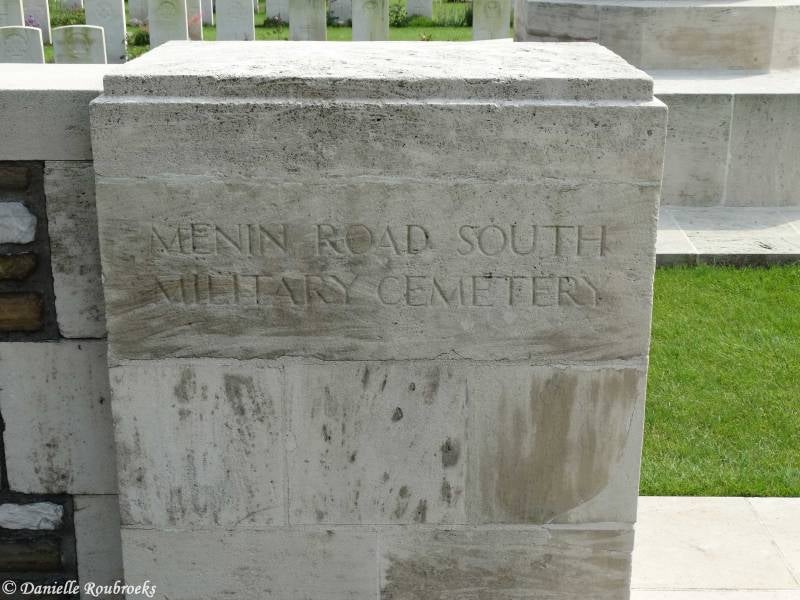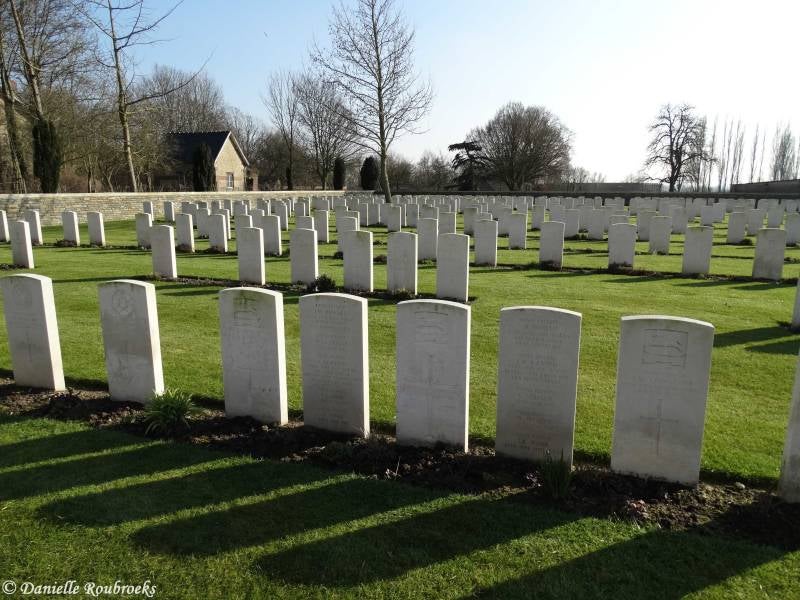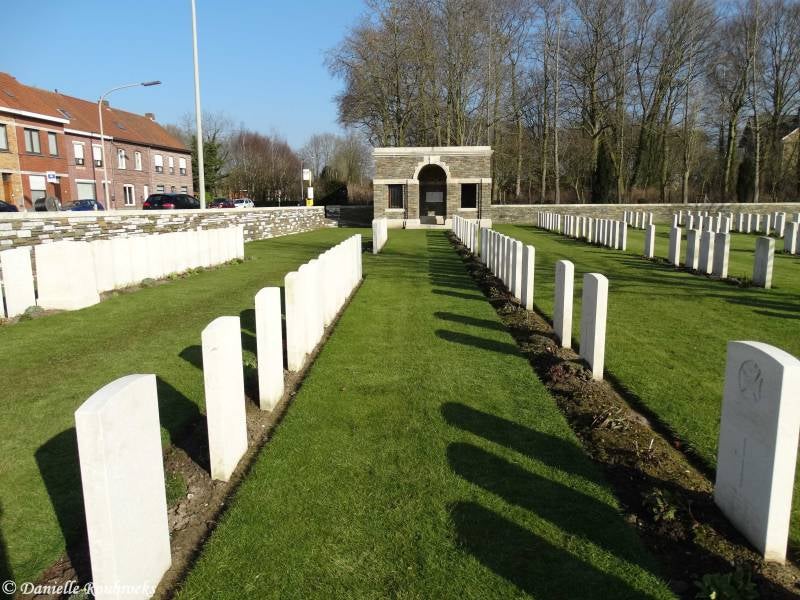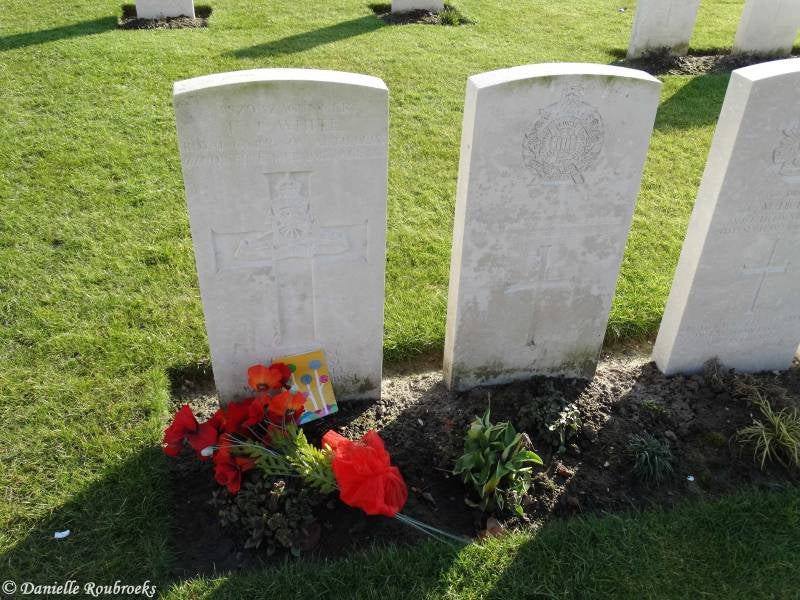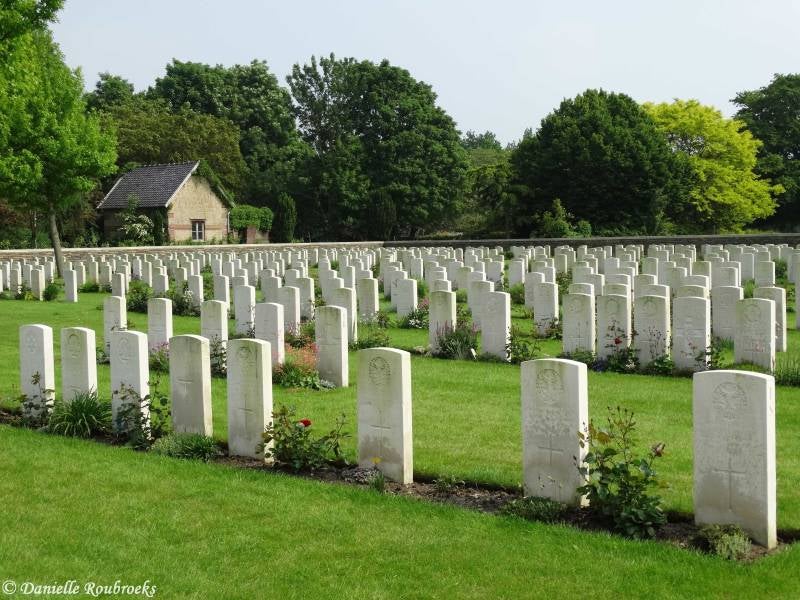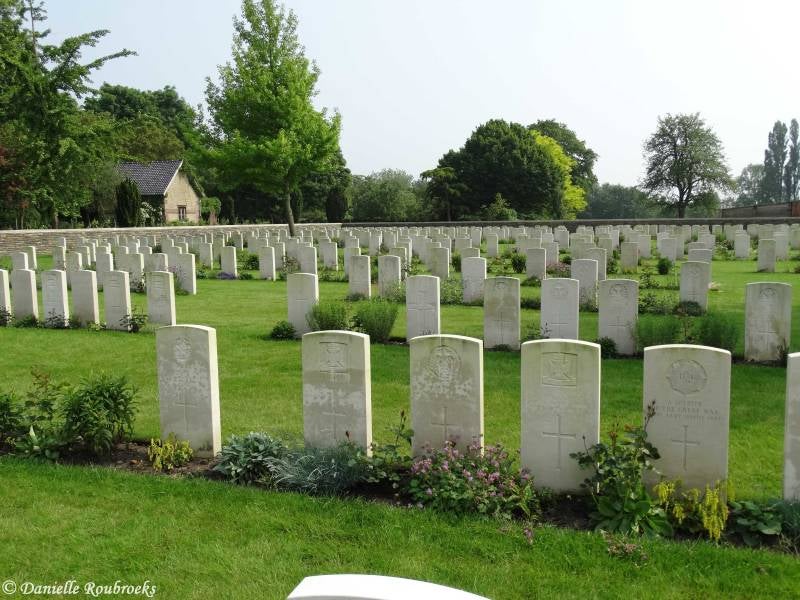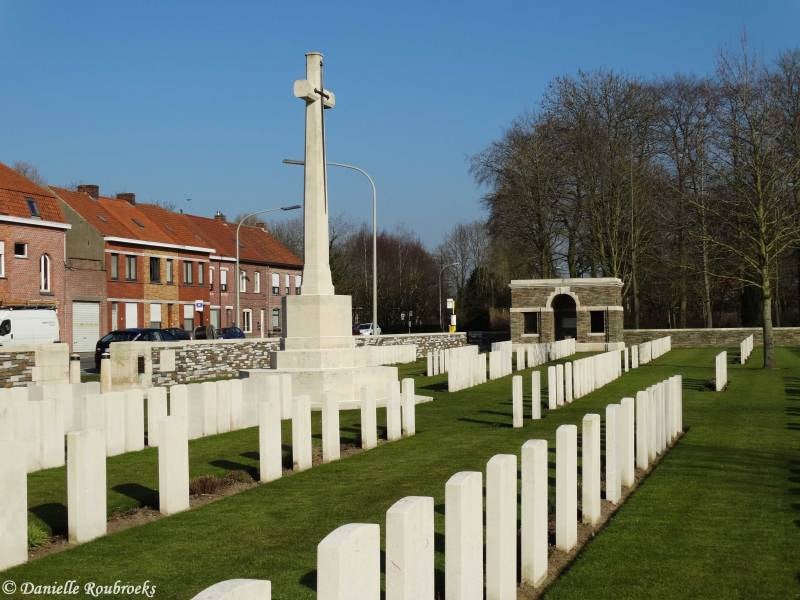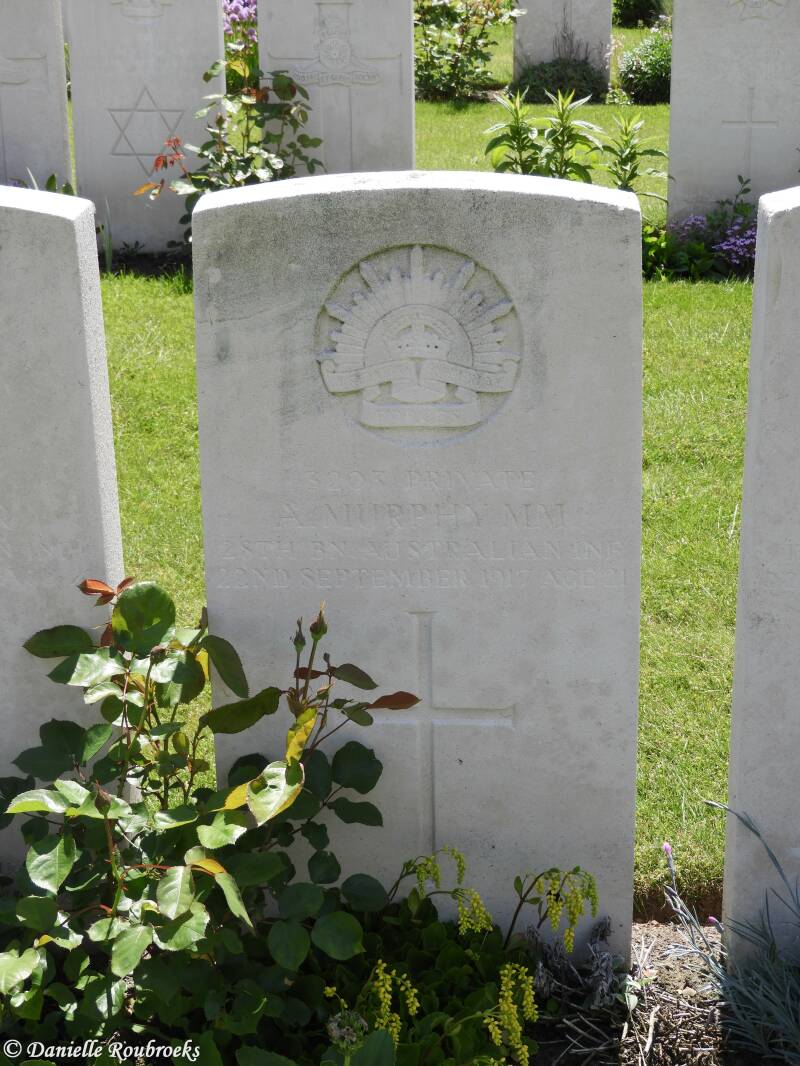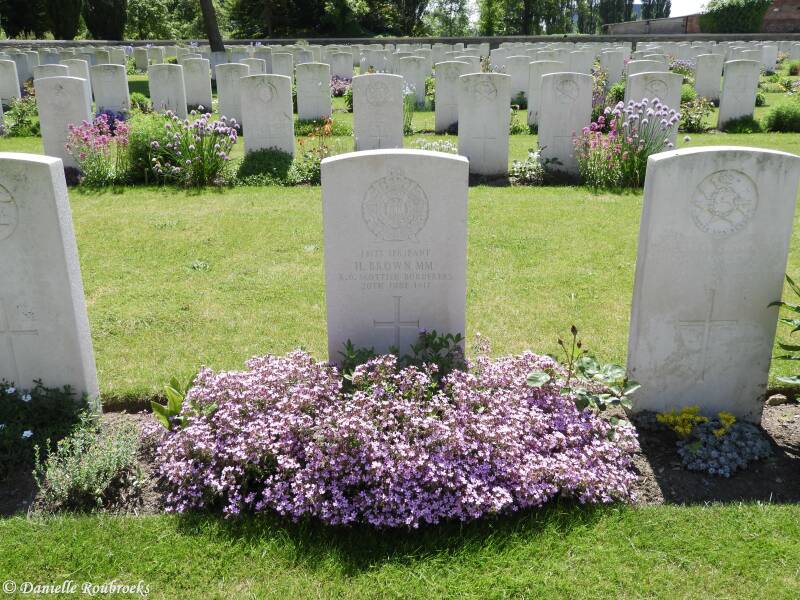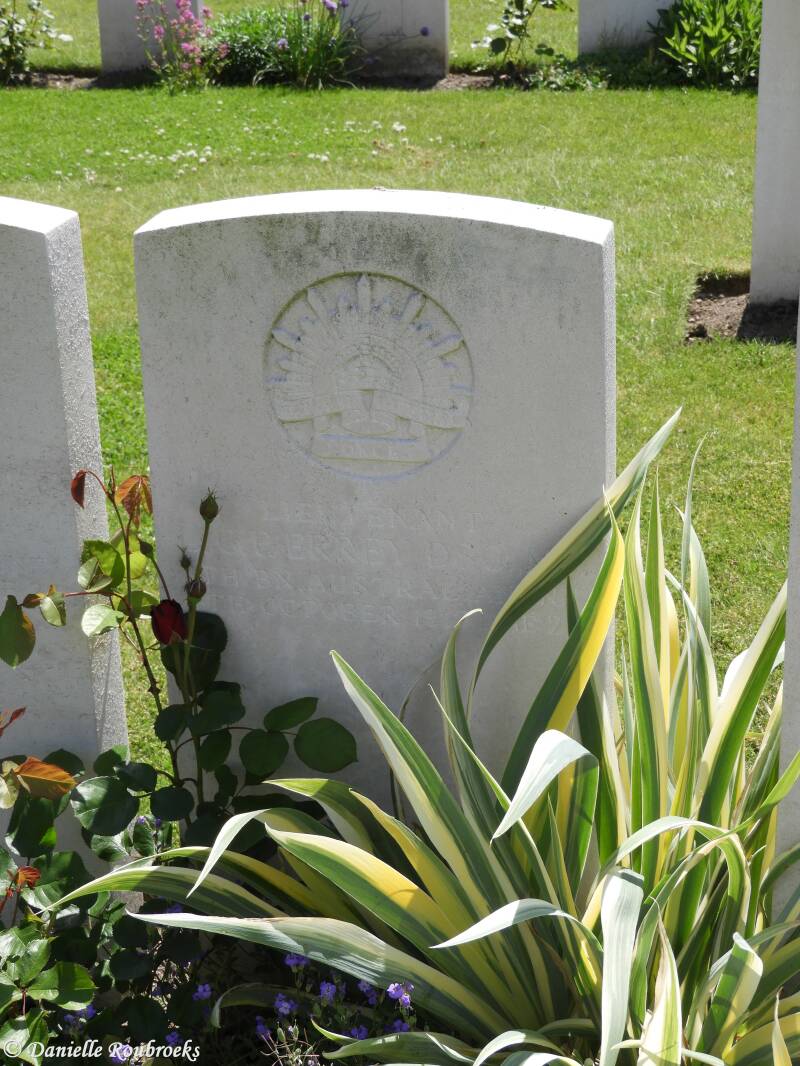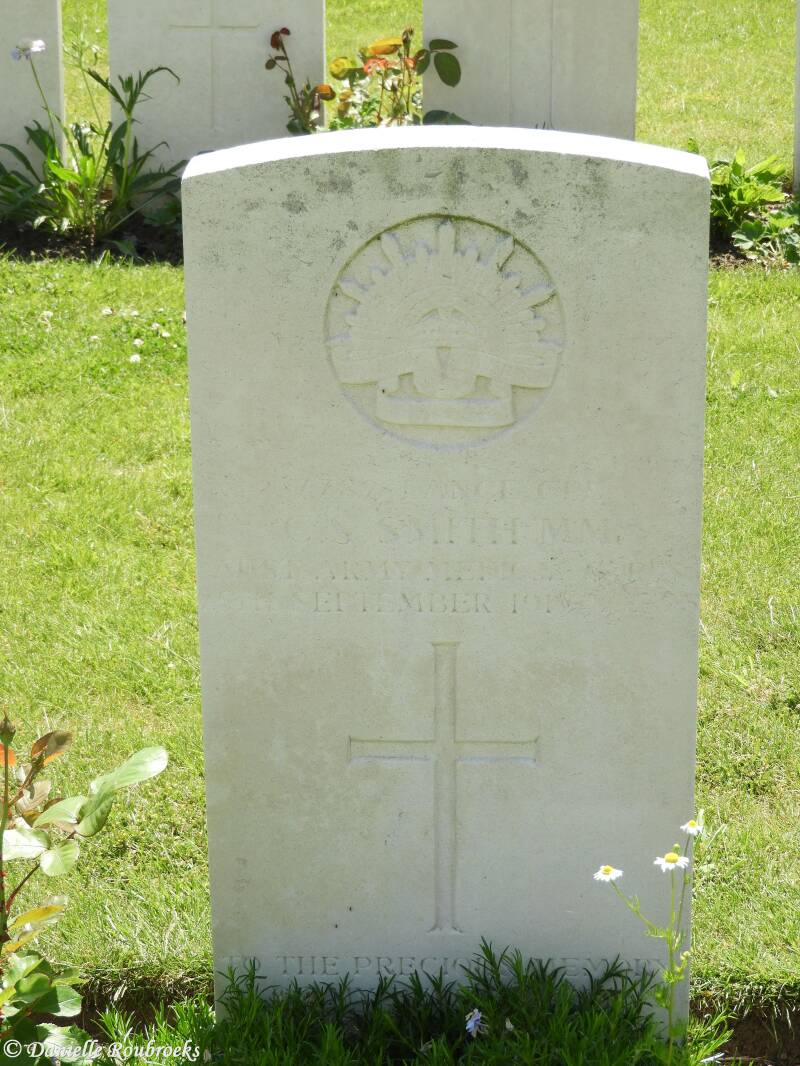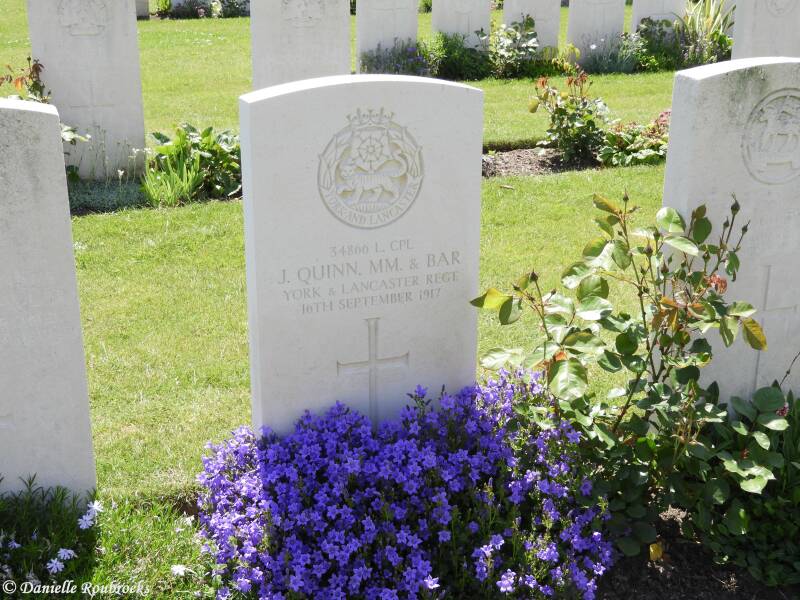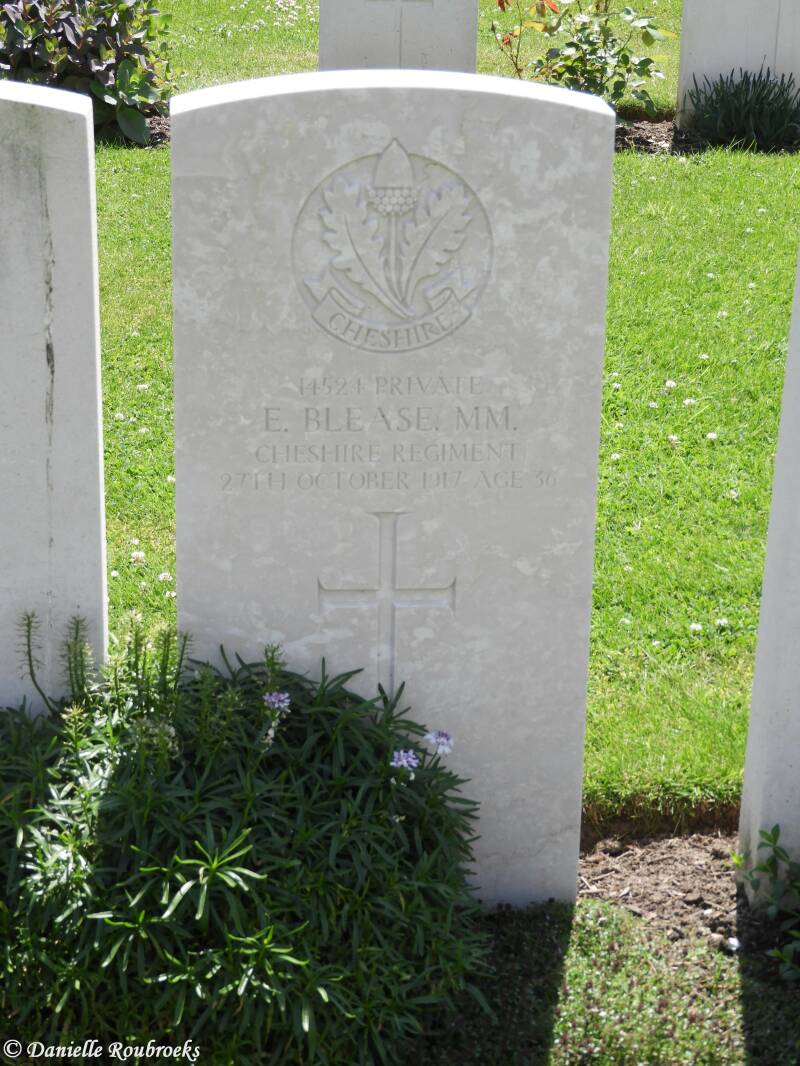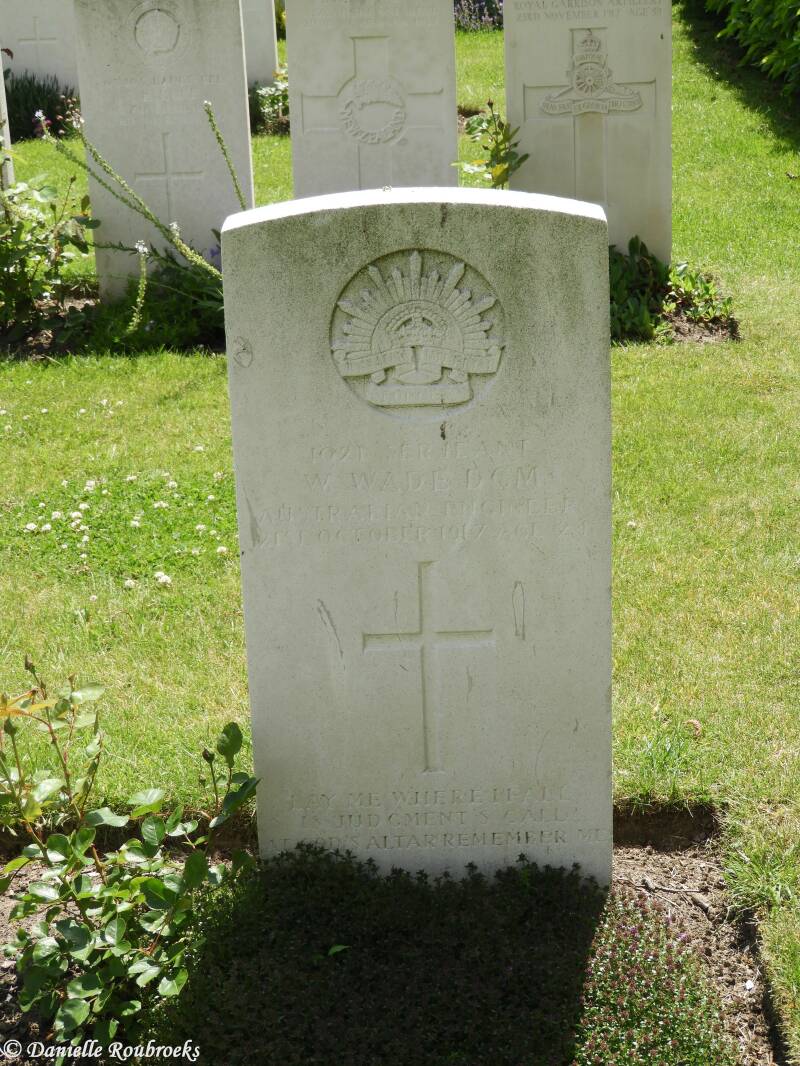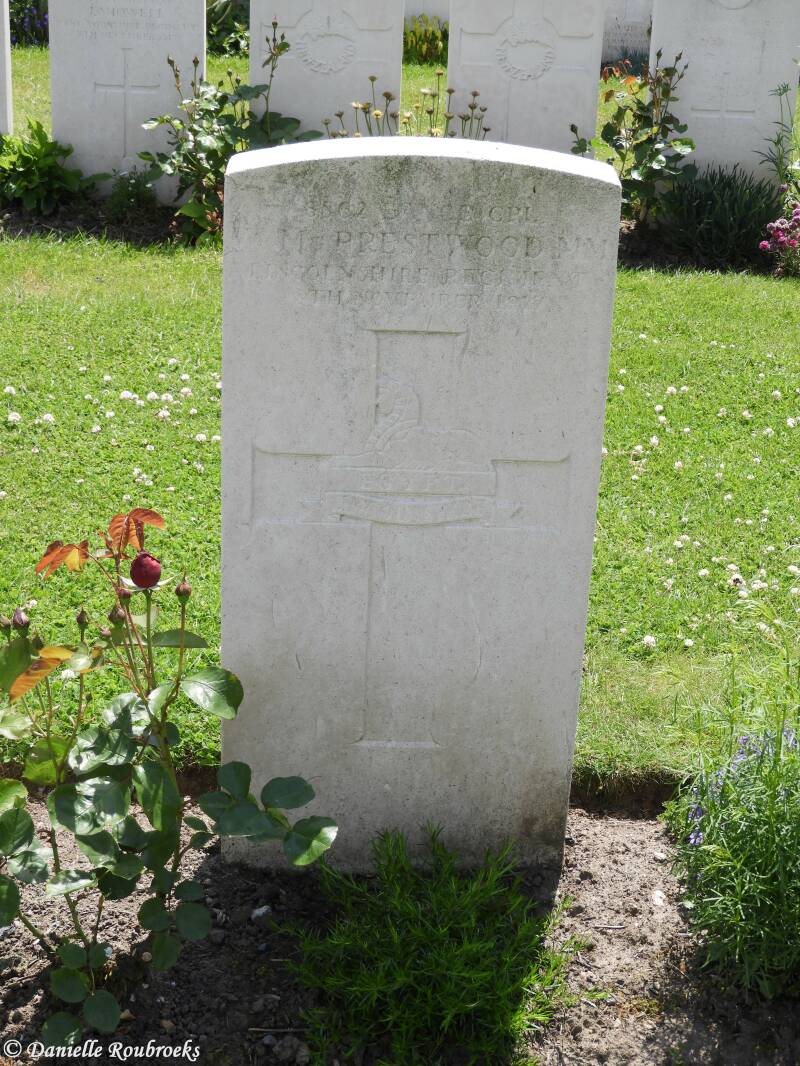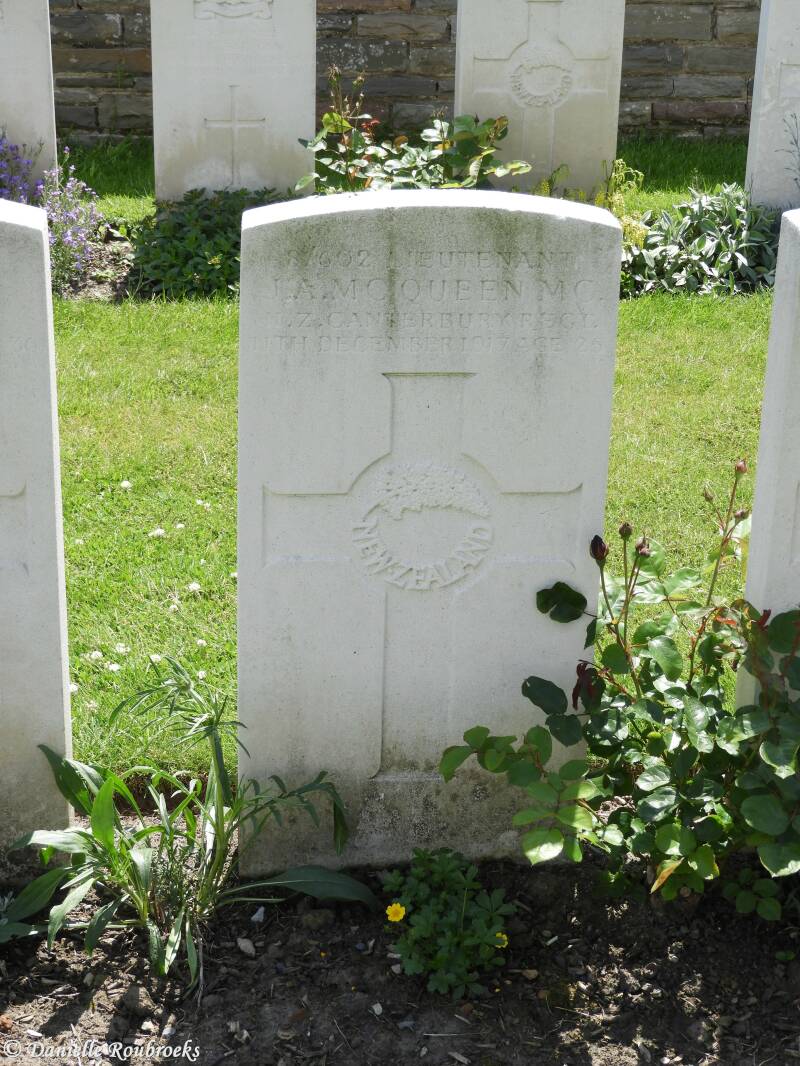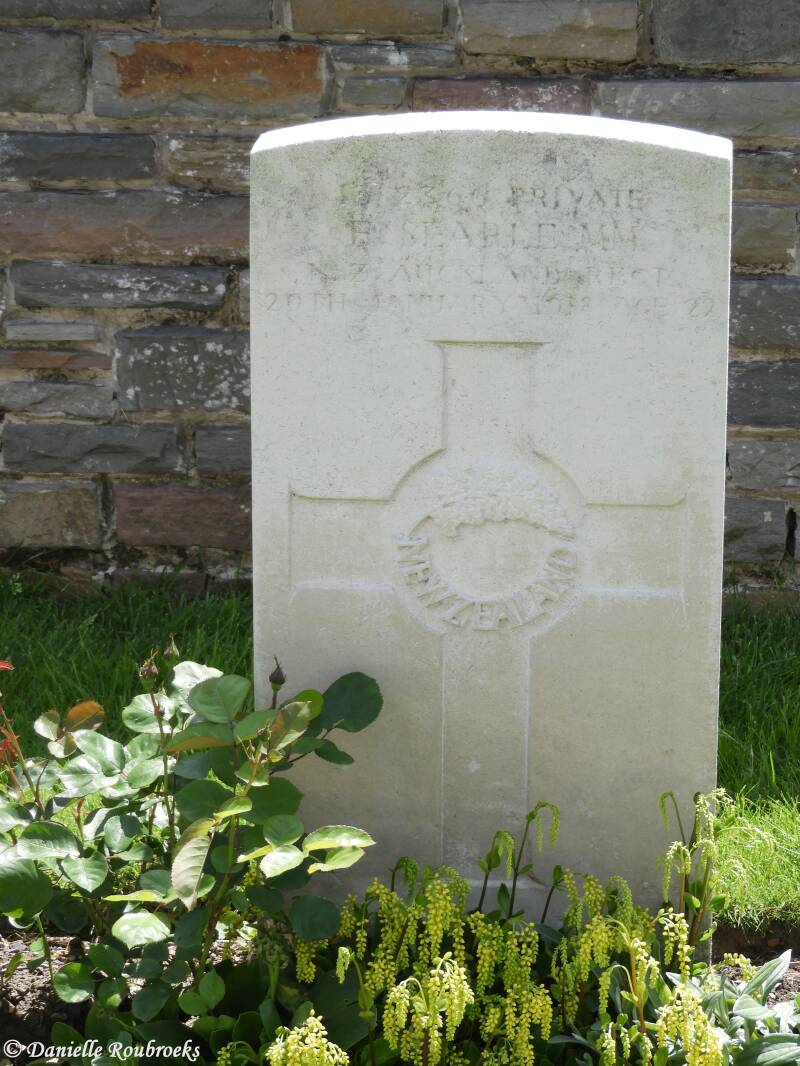Menin Road South Military Cemetery
History Information (Source: CWGC)
The Menin Road ran east and a little south from Ypres (now Ieper) to a front line which varied only a few kilometres during the greater part of the war. The position of this cemetery was always within the Allied lines. It was first used in January 1916 by the 8th South Staffords and the 9th East Surreys, and it continued to be used by units and Field Ambulances until the summer of 1918. The cemetery was increased after the Armistice when graves were brought in from isolated positions on the battlefields to the east.
There are now 1,657 servicemen of the First World War buried or commemorated in this cemetery. 118 of the burials are unidentified but special memorials are erected to 24 casualties known or believed to be buried among them. In addition, there are special memorials to 54 casualties who were buried in Menin Road North Military Cemetery, whose graves were probably destroyed by shell fire and could not be found. These are numbered between 1 and 57. The cemetery was designed by Sir Reginald Blomfield.
Served with
· United Kingdom (1087)
· Australian (261)
· Canadian (146)
· New Zealand (52)
Served in
· Army (1544)
· Air Force (2)
VICTORIA CROSS
Captain Thomas Riversdale COLYER-FERGUSSON - 2nd Bn. Northamptonshire Regiment
Died 31 July 1917 Age 21
Country of Service: United Kingdom
Awards: Victoria Cross
Citation
An extract from "The London Gazette," No. 30272, dated 4th Sept., 1917; records the following:- "For most conspicuous bravery, skilful leading and determination in attack. The tactical situation having developed contrary to expectation, it was not possible for his company to adhere to the original plan of deployments, and owing to the difficulties of the ground and to enemy wire, Captain Colyer Fergusson found himself with a Serjeant and five men only. He carried out the attack nevertheless, and succeeded in capturing the enemy trench and disposing of the garrison. His party was then threatened by a heavy counter-attack from the left front, but this attack he successfully resisted. During this operation, assisted by his Orderly only, he attacked and captured an enemy machine gun and turned it on the assailants, many of whom were killed and a large number driven into the hands of an adjoining British unit. Later, assisted only by his Serjeant, he again attacked and captured a second enemy machine gun, by which time he had been joined by other portions of his company, and was enabled to consolidate his position. The conduct of this officer throughout forms an amazing record of dash, gallantry and skill, for which no reward can be too great, having regard to the importance of the position won. This gallant officer was shortly afterwards killed by a sniper."
Grave Reference: II. E. 1.
(Source: Wikipedia)
Distinguished soldiers
Thomas Riversdale Colyer-Fergusson, Captain of the 2nd Bn. Northamptonshire Regiment was awarded the Victoria Cross (VC) for bravery, skillful leadership and perseverance in the attack.
Charles Ernest Atchison, Lieutenant Colonel in the King's Shropshire Light Infantry and Leonard George Prentice Errey, Lieutenant Colonel in the Australian Infantry were awarded the Distinguished Service Order (DSO). The latter also received the Military Cross (MC).
the captains Percy Whyatt, Samuel LLewellyn Serpell, L.R.M. Malloch, Audley C.H. Millar, W.D.
Reid and Archibald Niven Sinclair, and Lieutenants John Alexander McQueen, Alva Elmer Metcalfe and Leonard George Prentice Errey were awarded the Military Cross (MC).
Gilbert Leonard Newbery, Second Lieutenant in the Army Service Corps, acquired the Volunteer Officers' Decoration (VD).
there are still 24 soldiers who have received the Military Medal (MM).



